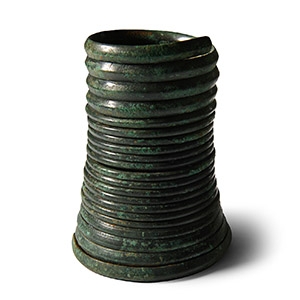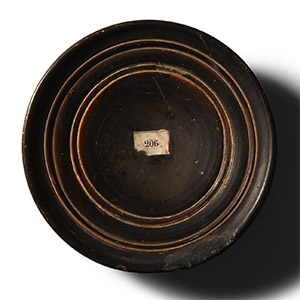Home > Auctions > 5 - 9 December 2023
Ancient Art, Antiquities, Natural History & Coins
Auction Highlights:
Ex Frank Sternberg collection, Zürich, Switzerland, circa 1980-1985.
Property of an East Sussex, UK, private collector.
Cf. Lilliu, G., Sculture della Sardegna Nuragica, Nuoro, 2008, figs.4, 5, 7, 28, for similar heads.
Despite being stylised representations, these bronzes detail the material culture of warriors, tribal leaders, priests, athletes, men and women of the late Bronze Age and Iron Age Sardinian society.
Private collection, Germany, 1980s.
Acquired on the UK art market 2010.
Cf. Furtwängler, A., Olympia. Die Ergebnisse der von dem Deutschen Reich veranstalteten Ausgrabung Band 4. 2 Bände (Textband, Tafelband), Asher, Berlin, 1890, pl.TL, no.839.
The handles were usually shaped as divinities or animals linked with gods (ie. lions for Herakles). A similar specimen can be seen in the Berlin Museum (inv.7491), from Athens.
Acquired on the UK art market 2000s.
Cf. Furtwängler, A., Olympia. Die Ergebnisse der von dem Deutschen Reich veranstalteten Ausgrabung Band 4. 2 Bände (Textband, Tafelband), Asher, Berlin, 1890, pl.TLV, nos.923-924, for similar handles.
The handle appears to be a device once attached to a wine vessel or pan-like vessels. The vessel handles were usually formed as divinities or animals linked with gods (ie. lions for Herakles). The lion's skin is hanging down as in representations of Herakles resting and drinking after his labours.
From the collection of D. Smith, Sussex, UK, 1990s.
Cf. similar bull in the Museum of Fine Art of Budapest, inventory no.51.946.
Like dozens of similar statuettes depicting animals or human figures, this bronze bull was probably offered by a worshipper during a sacrifice. A large number of statuettes were found in a thick layer of ash from the altar of Zeus at Olympia. In 2021, a similar statuette, with protruding horns, was found in the sanctuary. Bulls and horses were the favourite cultic animals in the Cretan, Achaean and Archaic Greek civilisations. The model of the long and narrow body was borrowed from the Near East.
Late W.H. collection.
With Kunst der Antike, Munich, Germany, 1977.
Ex Gorny & Mosch, 16 December 2008, lot 261.
with Artemission, London, UK.
Property of a South Australian private collector, with collection reference 21.09.
Accompanied by detailed collector's catalogue pages including description and photograph.
Cf. no.229 in Jucker, Italy of the Etruscans, p.183. Jucker notes that the vessel comes from a workshop probably located in Cerveteri (or Veii) from which several works are known; for the workshop, see Bonamici, M., I buccheri con figurazioni graffite, 1974, 131 pl.33, no.72; pls.40 f., no.80; CVA France 31, 63f. pl.22,1-4.
From the Steel family collection, 1950s-late 1990s.
London, UK, gallery, 1971-early 2000s.
Ex P.A., Hertfordshire, UK, specialist collection of Greek art, 1980-1990s.
Accompanied by an original thermoluminescence analysis report no.N123n52 from Oxford Authentication.
This lot has been checked against the Interpol Database of stolen works of art and is accompanied by search certificate no.11952-210225.
Cf. similar vessel with different subject matter in the Metropolitan Museum of Art, New York, under accession number 06.1021.181.
Ex Barnard & Moore, 2003.
From a Norfolk, UK, private collection.
Accompanied by an original thermoluminescence analysis report no.N123k4 from Oxford Authentication.
Accompanied by an old Moore Antiquities identification card with reference no.1958 and invoice dated 26 July 2003.
Accompanied by an academic report by Dr Raffaele D’Amato.
This lot has been checked against the Interpol Database of stolen works of art and is accompanied by a search certificate number no.11918-205900.
Cf. Cambitoglou, A. and Trendall, A.D., ‘Addenda to Apulian Red-Figure Vase-Painters of the Plain Style’ in American Journal of Archaeology, Vol. 73, No. 4 (Oct., 1969), pp. 423-433, pls.119-120, figs.20-21, 26; similar painting style on a terracotta hydria in the Metropolitan Museum of Art, accession no. 56.171.65, in Mayo, M.E. and Hamma K., The Art of South Italy: Vases from Magna Graecia, Richmond: Virginia Museum of Fine Arts, 1982, no. 38, pp. 116–17, 308; some similar elements also on the volute crater in the MFA, accession no.1970.235; see also other works of Iliupersis in Trendall, A.D., Cambitoglou, A., The red-figured vases of Apulia, Oxford, 1978, figs.8/25; 8/51; 8/60.
The Iliupersis Painter was a south Italic Greek vase painter whose name is unknown. The name derives from a represented scene in a volute crater in the British Museum depicting the sacking of Troy (Iliou Persis). The characteristic pillar-shaped monument depicted here can be seen also on the MET hydria, where the closed foot of the woman corresponds in detail to the one on our vase. The Iliupersis Painter was a prolific and innovative artist, active just before mid 4th century B.C., whose work set the standard for the large, ornate-style vases of the second half of the same century: volute-kraters with plastic masks on the volutes, increased polychromy, complex floral ornament, multilevel compositions, mourners surrounding funerary naiskoi and stelei.
Private Swiss collection, acquired 2002.
Cf. similar item in the British Museum, London, under accession number 1856,1226.722.
Ex Axel Guttmann Collection of Ancient Arms and Armour, Germany [1944-2001], AG 490.
This lot has been checked against the Interpol Database of stolen works of art and is accompanied by search certificate no.11953-210857.
Cf. similar in the British Museum under accession no. 1873,0820.201.
Born H. and Habsen, S., Helme und Waffen Alteuropas: Sammlung Axel Guttmann, IX, Mainz, 2001, (AG 490), p.32.
From the collection of Louis-Gabriel Bellon (1819-1899), Saint-Nicolas-lez-Arras and Rouen, thence by descent.
with Millon & Associes Auctions, Paris, 6th December 2021, lot 29.
37 - 48 of 2409 LOTS

.jpg)


.jpg)

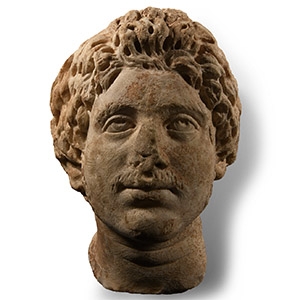
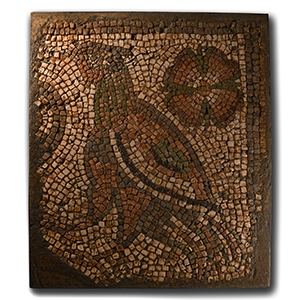
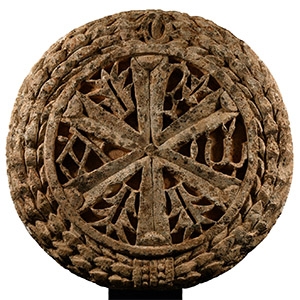


.jpg)


.jpg)
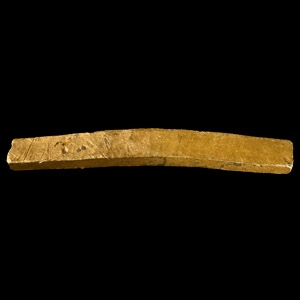
.jpg)
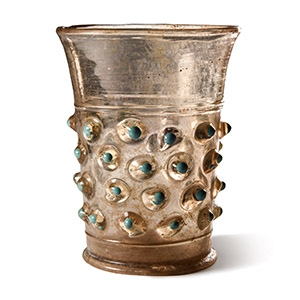

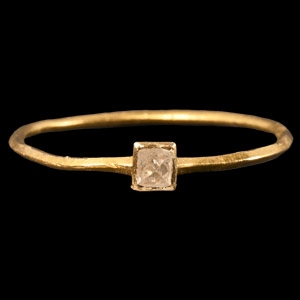

.jpg)

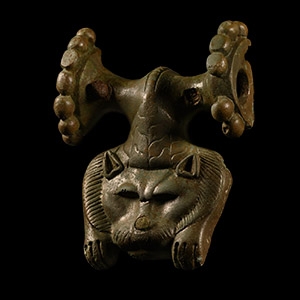
.jpg)
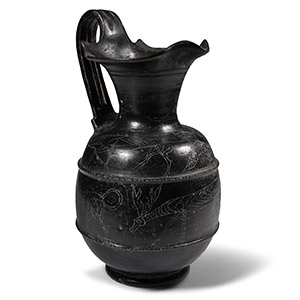
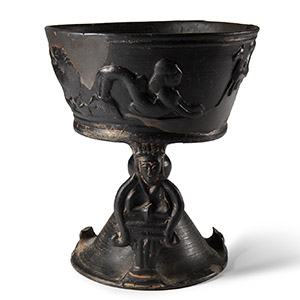
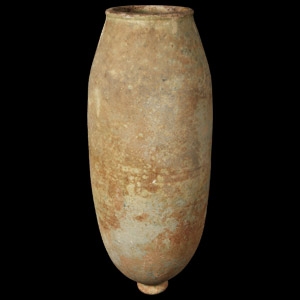
.jpg)

